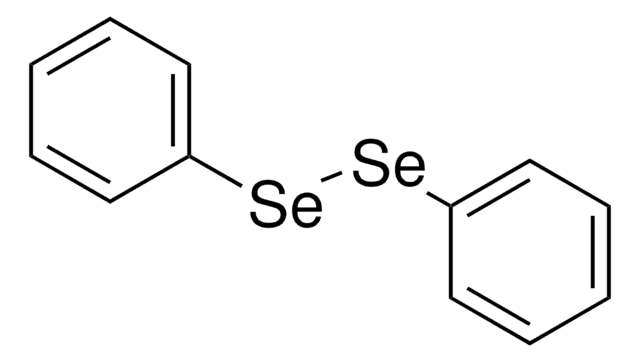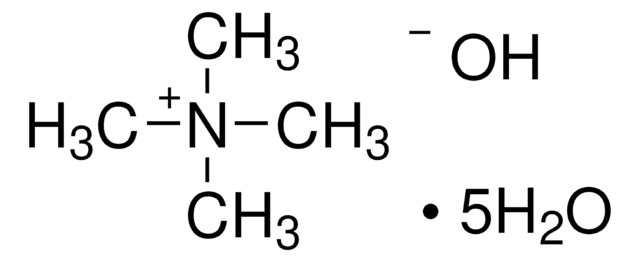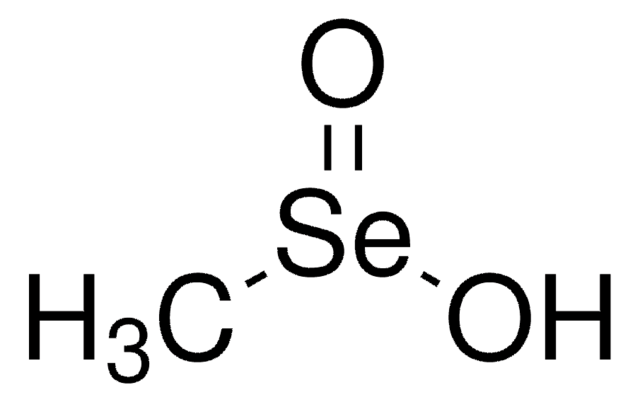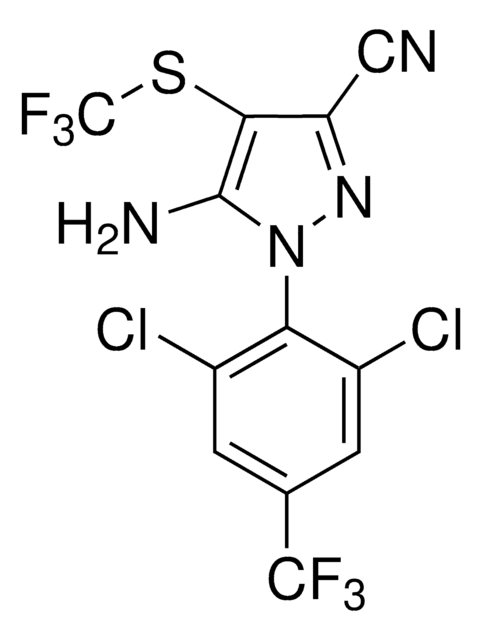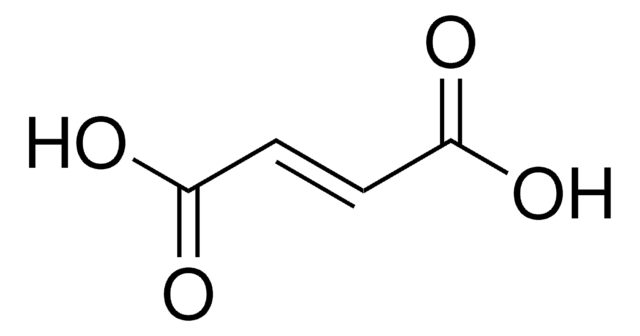41572
Dimethyl selenide
≥99.0% (GC)
Synonym(s):
Methyl selenide
Sign Into View Organizational & Contract Pricing
All Photos(1)
About This Item
Linear Formula:
(CH3)2Se
CAS Number:
Molecular Weight:
109.03
Beilstein:
1696848
EC Number:
MDL number:
UNSPSC Code:
12352103
PubChem Substance ID:
NACRES:
NA.23
Recommended Products
Quality Level
Assay
≥99.0% (GC)
form
liquid
density
1.408 g/mL at 20 °C (lit.)
storage temp.
2-8°C
SMILES string
C[Se]C
InChI
1S/C2H6Se/c1-3-2/h1-2H3
InChI key
RVIXKDRPFPUUOO-UHFFFAOYSA-N
Related Categories
General description
Atomic number of base material: 34 Selenium
Signal Word
Danger
Hazard Statements
Precautionary Statements
Hazard Classifications
Acute Tox. 3 Inhalation - Acute Tox. 3 Oral - Aquatic Acute 1 - Aquatic Chronic 1 - STOT RE 2
Storage Class Code
6.1A - Combustible acute toxic Cat. 1 and 2 / very toxic hazardous materials
WGK
WGK 3
Flash Point(F)
Not applicable
Flash Point(C)
Not applicable
Personal Protective Equipment
dust mask type N95 (US), Eyeshields, Gloves
Regulatory Information
新产品
Choose from one of the most recent versions:
Already Own This Product?
Find documentation for the products that you have recently purchased in the Document Library.
Ximena Diaz et al.
Environmental science & technology, 43(1), 53-59 (2009-02-13)
The removal mechanisms that govern Se concentrations in the Great Salt Lake are unknown despite this terminal lake being an avian habitat of hemispheric importance. However, the volatilization flux of Se from the Great Salt Lake has not been previously
Sandra Van den Velde et al.
Journal of chromatography. B, Analytical technologies in the biomedical and life sciences, 875(2), 344-348 (2008-10-22)
Liver diseases can cause a sweet, musty aroma of the breath, called fetor hepaticus. Even in a stage of cirrhosis, the disease can be asymptomatic for many years. Breath analysis might be helpful to detect occult liver pathology. This study
Mikhail V Andreev et al.
Molecules (Basel, Switzerland), 25(24) (2020-12-19)
The efficient regio- and stereoselective synthesis of (Z,Z)-3,3'-selanediylbis(2-propenamides) in 76-93% yields was developed based on the reaction of sodium selenide with 3-trimethylsilyl-2-propynamides. (Z,Z)-3,3'-Selanediylbis(2-propenamides) are a novel class of organoselenium compounds. To date, not a single representative of 3,3'-selanediylbis(2-propenamides) has been
Daniel Kremer et al.
Analytical and bioanalytical chemistry, 383(3), 509-515 (2005-09-15)
The amount of volatile dimethylselenide (DMSe) in breath has been monitored after ingestion of sub-toxic amounts of selenium (300 microg (77)Se, as selenite) by a healthy male volunteer. The breath samples were collected in Tedlar bags every hour in the
Yuki Ohta et al.
Chemical research in toxicology, 22(11), 1795-1801 (2009-09-01)
Selenium is an essential trace element found in vegetables as selenomethionine (SeMet) and methylselenocysteine (MeSeCys). In the present study, we used stable isotopes of Se to investigate differences between how SeMet and MeSeCys are metabolized, using methylseleninic acid (MSA) as
Articles
High Purity Metalorganic Precursors for CPV Device Fabrication
Our team of scientists has experience in all areas of research including Life Science, Material Science, Chemical Synthesis, Chromatography, Analytical and many others.
Contact Technical Service

